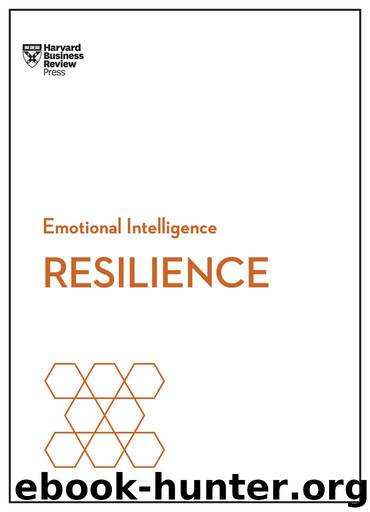Resilience (HBR Emotional Intelligence Series) by unknow

Author:unknow
Language: eng
Format: epub
Publisher: Harvard Business Review Press
Published: 2017-04-18T04:00:00+00:00
5
Firing Back
How Great Leaders Rebound After Career Disasters
By Jeffrey A. Sonnenfeld and Andrew J. Ward
Among the tests of a leader, few are more challenging—and more painful—than recovering from a career catastrophe, whether it is caused by natural disaster, illness, misconduct, slip ups, or unjust conspiratorial overthrow. But real leaders don’t cave in. Defeat energizes them to rejoin the fray with greater determination and vigor.
Take the case of Jamie Dimon, who was fired as president of Citigroup but now is CEO of JP Morgan Chase. Or look at Vanguard founder Jack Bogle, who was removed from his position as president of Wellington Management but then went on to create the index fund and become a leading voice for governance reform. Similarly, there’s former Coca-Cola president Steve Heyer, who was surprisingly passed over for the CEO position at Coke but then was quickly named head of Starwood Hotels. Most colorful, perhaps, is Donald Trump, who recovered from two rounds of financial distress in his casino business and is admired today both as a hugely successful estate developer and as a producer and star of popular reality TV shows—and of course ran successfully for President of the United States.
These stories are still the exception rather than the rule. F. Scott Fitzgerald’s famous observation that there are no second acts in American lives casts an especially dark shadow over the derailed careers of business leaders. In our research—analyzing more than 450 CEO successions between 1988 and 1992 at large, publicly traded companies—we found that only 35% of ousted CEOs returned to an active executive role within two years of departure; 22% stepped back and took only advisory roles, generally counseling smaller organizations or sitting on boards. But 43% effectively ended their careers and went into retirement.
What prevents a deposed leader from coming back? Leaders who cannot recover have a tendency to blame themselves and are often tempted to dwell on the past rather than look to the future. They secretly hold themselves responsible for their career setback, whether they were or not, and get caught in a psychological web of their own making, unable to move beyond the position they no longer hold. This dynamic is usually reinforced by well-meaning colleagues and even by family and friends, who may try to lay blame in an attempt to make sense of the chaos surrounding the disaster. Sadly, their advice can often be more damaging than helpful.
In every culture, the ability to transcend life’s adversity is an essential feature of becoming a great leader. In his influential 1949 book, The Hero with a Thousand Faces, anthropologist Joseph Campbell showed us that the various stories of great leaders around the world, in every culture and every era, are all essentially the same story—the “hero myth.” This myth is embodied in the life stages of such universal archetypes as Moses, Jesus, Muhammad, Buddha, Aeneas, Odysseus, and the Aztecs’ Tezcatlipoca. Transformational leaders follow a path that entails a call to greatness, early successes (involving tough choices), ongoing trials, profound setbacks, and, ultimately, triumph as they reintegrate into society.
Download
This site does not store any files on its server. We only index and link to content provided by other sites. Please contact the content providers to delete copyright contents if any and email us, we'll remove relevant links or contents immediately.
Waking Up in Heaven: A True Story of Brokenness, Heaven, and Life Again by McVea Crystal & Tresniowski Alex(37004)
Empire of the Sikhs by Patwant Singh(22173)
We're Going to Need More Wine by Gabrielle Union(18074)
Hans Sturm: A Soldier's Odyssey on the Eastern Front by Gordon Williamson(16632)
Leonardo da Vinci by Walter Isaacson(11903)
The Radium Girls by Kate Moore(10907)
Educated by Tara Westover(7063)
Tools of Titans by Timothy Ferriss(6949)
How to Be a Bawse: A Guide to Conquering Life by Lilly Singh(6693)
The Last Black Unicorn by Tiffany Haddish(5075)
Permanent Record by Edward Snowden(4999)
The Rise and Fall of Senator Joe McCarthy by James Cross Giblin(4843)
Promise Me, Dad by Joe Biden(4449)
The Wind in My Hair by Masih Alinejad(4424)
The Crown by Robert Lacey(4105)
A Higher Loyalty: Truth, Lies, and Leadership by James Comey(4033)
The Iron Duke by The Iron Duke(3639)
Joan of Arc by Mary Gordon(3259)
How to be Champion: My Autobiography by Sarah Millican(3186)
